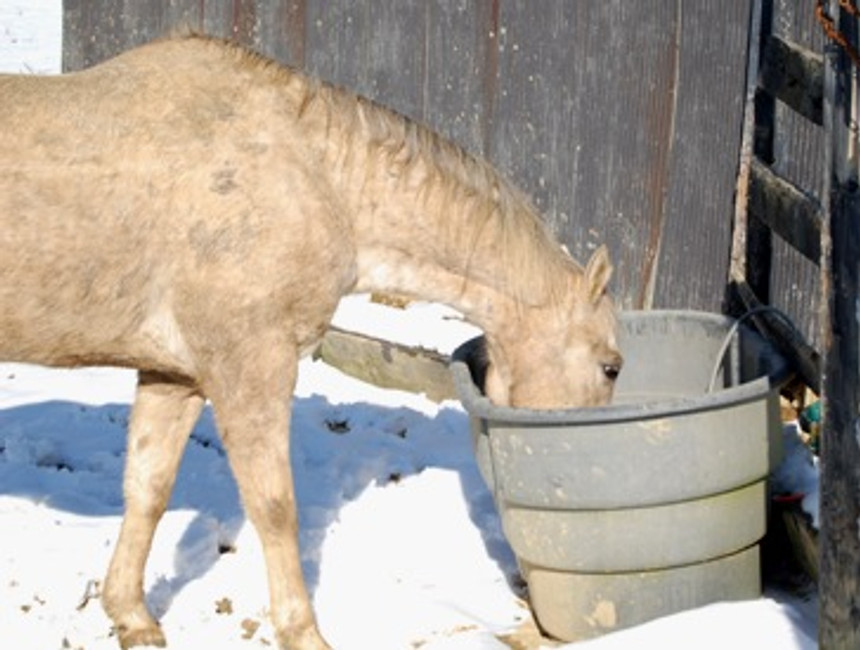
Winter How-to: Keep Your Horses Water from Freezing
With temperatures dropping and the days shrinking, this is the time of year to evaluate your winter preparedness. One of the most important things to evaluate when preparing for winter is your horse’s water. In areas where temperatures drop below freezing, buckets or troughs of water left outside may freeze leaving your horse with no supply of fresh water. This is a serious problem as horses consume 3 quarts of water per day on average and even more during the winter as they must use more energy to stay warm according to Off the Grid News and Horse Journals. Therefore, access to fresh, drinkable water is imperative for the health of your horse.
There are many options to consider when combating freezing of your horse’s drinking water depending on your specific location and climate. First you must evaluate how cold temperatures will get during the winter in your area. If you live in an area where temperatures fall just under freezing for most of the season, you will not need as much equipment as someone living in a colder climate.
For these slightly freezing climates, most owners can make do with the supplies they have on hand. For owners with a large amount of horses or livestock, you may consider grouping your troughs together. Grouping troughs together creates a “heat island” using the animal's’ body heat to shield out the cold. (Off the Grid News). For owners with fewer animals, moving the troughs partially into a well insulated shed will help to keep the water from freezing. If these two options don’t work or the water bucket or trough is far from any buildings, water circulators work great to keep water from freezing without needing to be plugged in. Most water circulators operate on batteries and can often be recharged using solar panel attachments.
For those people living in frigid climates, your best options require access to an electricity outlet. Frigid climates often prove too much for simple fixes like changing the location of the trough or adding a water circulator, for these temperatures, purchasing a tank heater is the best option although they can be expensive. A tank heater with a thermostat allows you to set a temperature to maintain an ideal drinking temperature for your horse. “A research project completed at the University of Pennsylvania’s New Bolton Center proved that ponies, when offered warm water or near-freezing water, drank 40 percent more warm water.” (Horse Journals). Propane heaters work nearly as well as electric tank heaters but can be expensive to run and can be rendered useless by strong winds. The upside to these heaters is they do not need to be plugged in; therefore these heaters are ideal for people living in frigid climates without ready access to electricity.
The next best options are heated buckets or an in-water heating element. Heated buckets don’t work as well to maintain an ideal drinking temperature but will keep ice from forming in most cases. In-water heating elements heat the water from inside the bucket or trough but can be disturbed by drinking horses so it is best to buy one that can sink to the bottom of the container. A sinking heating element also allows the entirety of the water to get warm while a floating one only heats the surface.
All in all, it is up to you to decide what strategy is best for your climate and financial situation. If you live in a slightly-freezing climate, you may be able to get away with simply changing the location of your trough. Colder climates require heating elements to keep water from freezing. A tank heater with a thermostat is the best option but heated buckets or in-water heating elements, at the least, should keep the water from freezing. Make sure to always monitor your horse’s water supply and its behavior as dehydration, in its early stages, can be hard to notice.

